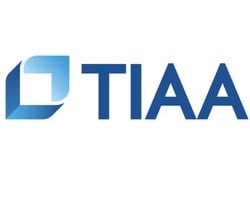Smart companies recognize that employee experiences ultimately drive or drain both the customer experience and the bottom line. It’s why the most advanced C suites now include a Chief Experience Officer (CXO).
In addition to the customer experience, CXOs own the entirety of the employee experience. From employee engagement and work satisfaction, to performance management and career development, the CXO’s job is to keep their finger on the pulse of what employees experience and feel at work. To do that successfully CXOs must gather, understand and act on authentic employee feedback. This is precisely why ER professionals should play a more prominent role in employee experience management.
It’s time for ER to flip the mindset from hard discussions to powerful insights. The very nature of ER’s role can and should help CXOs work from a more honest and transparent position of leadership. Afterall, listening at every stage of the employee lifecycle, identifying what matters to employees and embedding that into their personal experience is what employee experience is all about. No one is in a better position to help the CXO do that than ER professionals.
Here are five reasons ER should report to the CXO, or at the very least play on the same team:
ER listens closer for the real story when employees leave.
When an employee leaves, the exit survey typically includes questions about why an employee took another job. More often than not, their answer is going to be focused on the benefits of the other opportunity. Perhaps the pay was better, the hours were more flexible or the career path was more interesting. But what if that’s not really it?
ER is trained to listen to the conversations no one really wants to have. We’re used to getting the raw, rough feedback allowed by anonymous employee reporting. We’re used to asking awkward questions and creating safe spaces where people can honestly answer them.
Organizations need to be asking why an employee was open to taking an interview in the first place. Why did they dust off their resume? Where did the crack in the foundation start? What about the culture creates enough dissatisfaction to look for opportunities outside the organization? Where is trust and respect suffering – is it a people leader, a team, a process?
ER’s listening skills are sharper than most, and it takes a trained ear to know when to ask another question or three.
ER confidence counteracts employee burnout.
Burnout happens. In fact, according to Gallup a full three out of four employees experience burnout at least sometimes. No one in ER is shocked. The last few years have been taxing on all of us yet we’re watching managers forget how much their employees endured during the pandemic as team goals and expectations rebound in our ‘new normal.’
While we aren’t the silver bullet against burnout, a well oiled ER machine exhibits the efficiency and consistency precisely when burnout is at the highest risk of becoming turnover.
When an employee experience goes wrong the ER team can give employees confidence in culture and process with transparent, fair investigations, consistent case management, speedy resolutions and thoughtful aftercare.
ER is the action that speaks louder than words.
CXO’s are well versed around the need for pulse surveys to measure employee engagement but what happens when the pulse is flat and the feedback signals existing or potential issues?
ER is trained to use anonymous employee reporting to identify trends and take action ahead of brewing issues. ER data is naturally more focused on the WHY behind problems. It’s connected to historical employee relations case data which is a more reliable way to spot gaps between aspirational corporate values and a workforce’s cultural reality.
ER evolves culture from “open door” to “safety vault”, a process that takes time.
An open door is not enough. Even something as benign as a question about a paycheck can trigger employee anxiety about retaliation. In fact, recent research published in the 2023 Ethisphere Ethical Culture Report reveals that “nearly 39 percent of Gen Z employees reported that they chose not to report misconduct when they witnessed it. That represents just over an 11-point gap between them and their Gen X and Boomer colleagues.
Day in and day out, ER evolves cultures from “open door” to “safety vault” by consistently being thoughtful and responding with care. We deal with all the small issues, but that’s what gives us the track record we need when the big issues inevitably pop up. With every successful case we touch, even the small ones, we earn employee confidence and build trust in the moments that matter.
ER can measure what really makes an impact.
The saying “what gets measured gets managed” and that’s true for employee experience too. Where ER makes a difference is the insight we can add to a quick employee pulse measurement. For example, let’s say pulse survey results show a dramatic dip in engagement scores and higher turnover in one location. On the surface, there could be multiple reasons for that and the CXO will want to get to the bottom of what’s impacting employee experience in that location or team.
If ER is involved, we likely have current or historic case data that can shed some light on what’s really happening. For example, maybe one of our leaders keeps repeating the same mistake. Maybe a repeat offender has moved into a new location (and it’s past time to take action.)
Engagement pulse data is engineered to throw up a signal. ER data is engineered to protect people and hold up a legal case. The very nature of what we do demands that our data goes several layers deeper.
The reality is that no organization is perfect. Humans are going to make mistakes. Lines will be crossed, rules will get broken and feelings will get hurt. While positive experiences should be recognized and celebrated day in and day out, it’s the action we take in our most vulnerable moments where honesty, transparency, trust and culture are built or destroyed.




